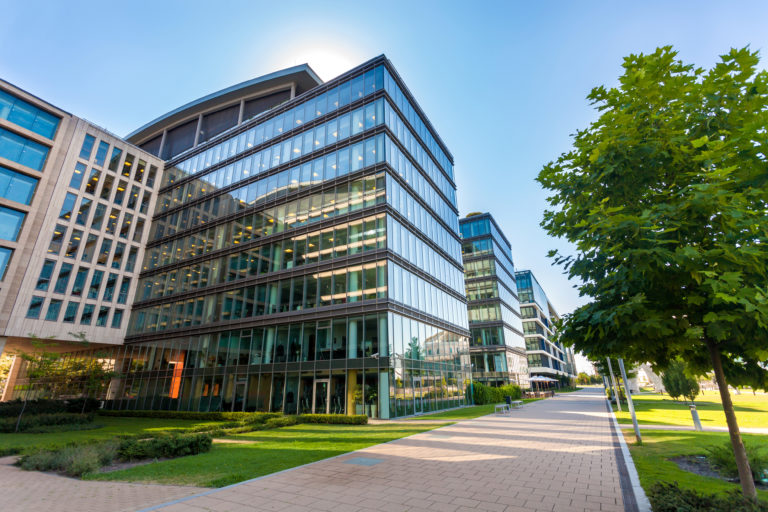
Jim Johnson, Vice President Strategic Partnerships, Environ
Last month, I had the opportunity to attend the National Association of Manufacturers (NAM) Spring Board Meeting—a gathering of industry leaders, policymakers, and peers focused on the future of American manufacturing. Environ Energy’s partnership with the NAM dates back to 2008 and today we provide energy and sustainability services to dozens of NAM members under the NAM Energy program.
The agenda was packed with discussions on the economy, policy, and one of the most urgent topics shaping our industry: energy and decarbonization. Here are my key takeaways:
1. Energy and Sustainability: Navigating Uncertainty
Our CEO, Chris Sternberg, presented to the Small and Medium Manufacturers Group, emphasizing the critical role manufacturers play in driving energy innovation. He also acknowledged the uncertainty surrounding when and how to invest in decarbonization and offered a practical approach to implementing sustainability.
Key takeaways:
- Energy shifts don’t happen in 4-year increments. Manufacturers must plan for long-term sustainability of power supply and carbon management, independent of political cycles. The National Association of Manufacturers has emphasized the need for long-term strategies that transcend election cycles.
- The push toward electrification has a compounding effect. Timing your organization’s response requires understanding when and where to “leverage the wave.”
- Increasing complexity in the power supply mix creates opportunities. Managing energy contracts like other financial instruments will be crucial for manufacturers.
- Adapting to energy transition risk will determine industry leaders. With ever-changing energy feedstock costs and technological evolution, companies that successfully navigate these changes will come out ahead.
Chris advised manufacturers to adopt a “Practical Sustainability” mindset when making capital investment decisions, balancing innovation with feasibility. One illustrative example he shared was Honda’s recent announcement of their Ohio “EV-Hub”. Rather than building dedicated electric vehicle assembly and battery plants – the success of which relies on being able to accurately predict fickle consumer demand for electric vehicles – Honda designed these facilities to be able to flexibly shift production between traditional, hybrid, and electric vehicles. This approach reduces Honda’s risk that their bet is wrong, or mistimed, while positioning the company to take advantage of market opportunities that may be present in the future. Manufacturers can and should be looking for similar ways to continue making practical progress on decarbonization and sustainability.
2. Policy and Advocacy: The National Association of Manufacturers’ Role
Throughout the event, the National Association of Manufacturers advocacy team reinforced the importance of manufacturers having a voice in policy discussions, particularly as it relates to energy and environmental regulations. Several key policy areas were discussed that will influence the pace and success of the energy transition:
- Support permitting reform to enable timely infrastructure and clean energy projects. Streamlining bureaucratic processes can accelerate the deployment of renewable energy and manufacturing facilities.
- Ensuring grid resilience and reliability as renewable energy continues to expand. Investments in grid modernization and energy storage solutions will be crucial to preventing power disruptions.
- Protect energy-intensive sectors while advancing decarbonization goals. Balancing emissions reduction with economic viability ensures these industries remain competitive in global markets.
- Preserve R&D tax credits that drive innovation in clean technologies. Continued support for research incentives will spur advancements in sustainable manufacturing processes and energy efficiency.
Beyond these core issues, the discussion also highlighted the importance of aligning energy policies with economic growth. Regulations that are too restrictive can stifle investment, while incentives that promote cleaner energy sources can accelerate progress. Policymakers must strike a balance between fostering sustainability and ensuring manufacturers remain competitive on a global scale.
Final Thoughts
The National Association of Manufacturers Spring Board Meeting reinforced that energy and decarbonization are not just challenges, but also opportunities for manufacturers to lead the transition to a more sustainable future. Companies that take proactive steps in energy management and sustainability will not only reduce costs and risks but also enhance their competitive edge. With evolving technologies, shifting policies, and increasing pressure from stakeholders, now is the time to implement practical strategies that ensure long-term success.
Environ works with manufacturers across the U.S. providing expertise and solutions to help navigate energy efficiency, procurement, and decarbonization strategies. Learn how to achieve solid return-on-investment (ROI) for facility upgrades and reduce energy costs and consumption. Connect with us at info@environenergy.com



